.
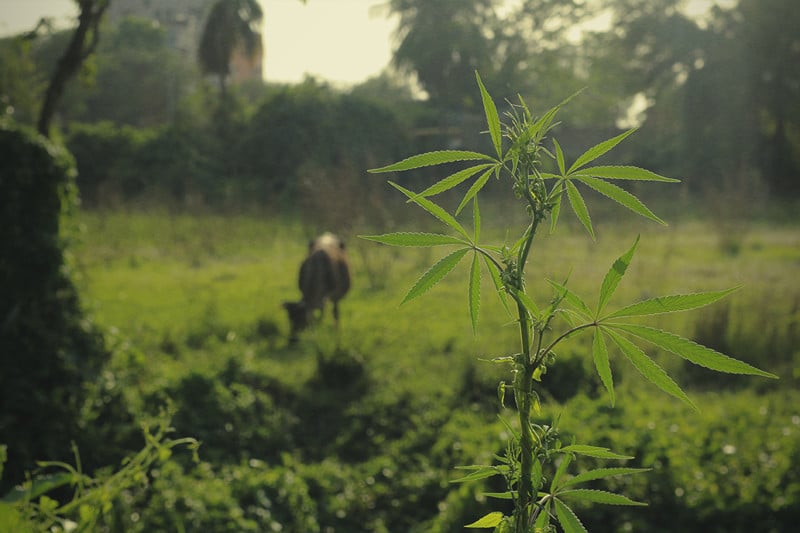
How To Protect Your Cannabis Plants From Hungry Animals
Many members of the animal kingdom, from birds to small mammals, have an appetite for cannabis plants. These critters will munch on anything, including the flowers, leaves, and even the roots. Use these methods to keep your crops safe until harvest time.
Growing cannabis outdoors is a deeply rewarding process that allows growers to spend more time in and develop a deeper connection with nature. The increase in space that comes with the great outdoors allows growers to cultivate much larger plants and achieve a much bigger yield. However, growing outdoors comes with its own set of challenges. Nature is home to a wide array of animals that have a taste for plants, and will happily indulge in your cannabis crop as a meal.
PROTECT YOUR CANNABIS PLANTS FROM HUNGRY ANIMALS
Common forms of wildlife that have a taste for cannabis include deer, mice and rats, and insects. Household pets such as dogs and cats are also known to dig around, excrete around, and also consume cannabis plants. Prevention regarding these animals is well documented. This article will cover other animals that are less often considered when protecting outdoor grows. Animals such as squirrels, foxes, raccoons, moles, and others also pose a threat to outdoor cannabis plants. Continue reading to find out how to spot the signs of these animals in your garden, and how to prevent them from doing serious damage.
MOLES
Moles are the diggers of the Mammalian class. These subterranean critters have evolved to possess powerful forelimbs and large paws that allow them to tunnel underground efficiently. Moles don’t intentionally target cannabis plants, and they don’t munch on them as a source of sustenance either, instead favouring worms and other small invertebrates. In fact, the presence of moles can come along with some benefits, including soil aeration. However, moles can definitely do damage to plants by tunneling too close to the root systems. Too much damage to these structures and your plants will have a hard time taking up nutrients and water from the rhizosphere.

SIGNS OF MOLES
Although mole sightings are rare, they do make their presence obvious, which is a relief considering it’s practically impossible to assess roots for damage. The most obvious signs that moles are roaming beneath your garden are mole hills, mounds of soil that are pushed up from the ground as moles construct tunnels.
CONTROLLING MOLES
One effective way to stop moles from ravaging your cannabis roots is to place mole netting underground. Place a cylindrical or cuboid cage made from metal mesh a couple metres into the ground where you intend to grow, keeping both the top and bottom open. This will guard your roots against tunneling moles while allowing your plants enough space to expand their root systems.
Mole traps are another viable prevention method. These traps can simply be placed within the tunnels once they have been located. Check these live traps once a day and place any captures far away from your garden.
Companion planting is another option when it comes to mole control. Caper spurge, or Euphorbia lathyris, is a biennial plant that exudes substances from its roots that are reported to repel moles. Finally, electronic solar mole repellers have been shown to be effective at turning away moles. These pole-like devices are driven into the ground and emit a low-frequency vibration that mimics predators or competing moles.
GOPHERS
Much like moles, gophers have adapted to tunnel underground. These burrowing rodents belong to the Geomyidae family, which consists of around 35 species. They create tunnel networks underground in order to collect and hoard food. They primarily survive on a diet consisting of roots, shrubs, and vegetables, and are not averse to chomping on cannabis roots and leaves. These animals are largely solitary outside of the breeding season; their territorial nature means they often reside in separate tunnel systems.

SIGNS OF GOPHERS
There are several signs to be aware of to help detect and prevent gophers in your cannabis garden. Unlike moles, gophers will happily emerge from the ground to directly consume plants. If you notice parts of your plants have been chewed away, a gopher could be the culprit. If your plants are still small, then you might notice that one or two have even entirely disappeared. Gophers also create mounds in the ground as they begin digging their tunnels. One way to tell these apart from molehills is by the “plug” that appears in the form of a small dip, either in the center or on the sides of the mound.
CONTROLLING GOPHERS
Being the diggers that they are, gophers can in part by deterred by using the same underground metal cage technique used to repel moles. Because they have the tendency to come above ground and chew leaves, it's also a good idea to erect a similar cage around plants.
Gophers cannot tolerate the scents of castor oil and garlic, meaning these botanical allies can be used to force gophers out of their tunnels and urge them to find a new home. Pour a garlic infusion or castor oil down tunnel entrances to make gophers know they’re not welcome in your cannabis patch.
FOXES
An age-old battle has been waged between farmers and foxes. These small-to-medium-sized omnivorous mammals belong to the family Canidae, often live in small family groups, and reside in burrows underground. They act as both scavengers and predators, and will happily target livestock and vegetation for sustenance. Foxes are adaptable creatures that thrive in both rural and suburban environments, and therefore pose a threat to cannabis growers in both settings.
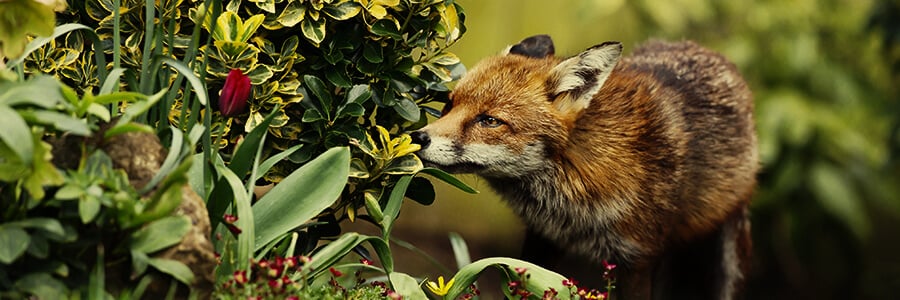
SIGNS OF FOXES
Foxes can cause significant damage to gardens in part by trampling plants and chewing through irrigation and hose pipes. They also frequently mark their territory with both urine and feces. Foxes are also known to dig up new plants, and are especially drawn to those fertilised by manure, dried blood, and bone meal.
CONTROLLING FOXES
Foxes are particularly difficult to both prevent and remove in a garden environment. Fences and netting are unlikely to be effective as the agile nature of foxes allows them to jump straight over. When it comes to dealing with foxes, it's often a matter of accepting their presence and adapting where possible. If you spot any fox holes forming in your garden, immediately fill them up before they deepen and become a den. Using alternative plant-based fertilisers as opposed to blood and bone meal will reduce the possibility of foxes digging around your plants. Finally, devices that emit ultrasonic sound may help to drive away foxes to begin with. However, the intelligence of these creatures makes them attuned to the sound; after a while, they will perceive it as harmless.
RACCOONS
Raccoons are highly intelligent mammals native to North America, which have also been introduced to parts of Europe and Asia. They have a diet consisting of mostly animals and around 30% plants. These medium-sized critters are known for entering gardens and hunting for their favorite meal: earthworms.
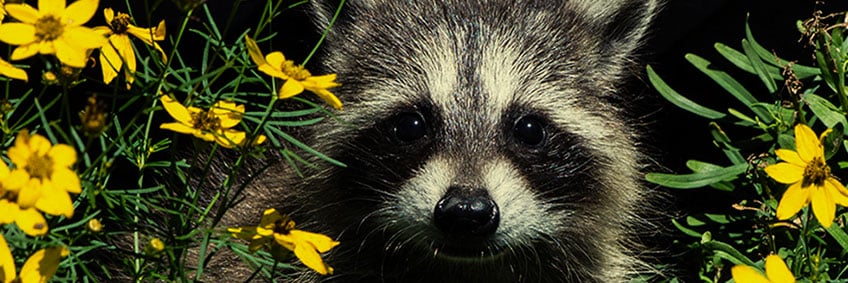
SIGNS OF RACCOONS
To obtain this tasty treat, raccoons use their front paws to rip away at the soil, creating large and deep holes in the ground. If this activity takes place at the base of one of your cannabis plants, then it could very well be fatal.
CONTROLLING RACCOONS
Luckily, this massive damage can be prevented by putting raccoons off the idea of digging in particular spots. A brief spray of castor oil repellent is enough to protect an area. Be sure to spray regularly if you see signs of raccoons, as the repellent will eventually wash away.
RABBITS
Although insanely cute, rabbits can cause serious damage to a cannabis crop if left to run rampant. These small mammals of the Leporidae family are found on every continent (minus Antarctica), and therefore every cannabis grower should be aware of signs of their presence.
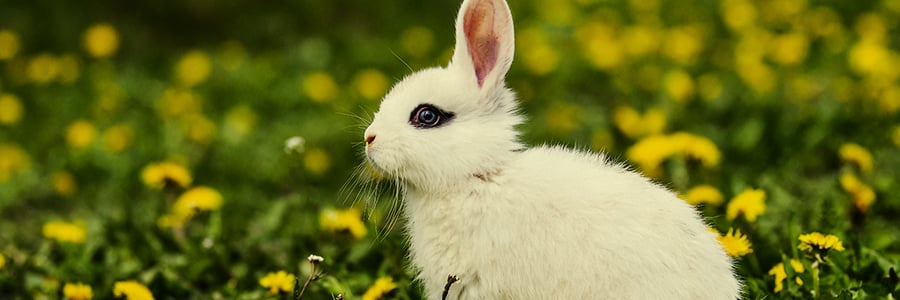
SIGNS OF RABBITS
Rabbits are another tunnelling species that will feast on both the roots and leaves of cannabis plants. One easy way to recognize if they have been grazing around your garden is an abundance of spherical droppings that will litter the ground. Likewise, you’ll also probably notice large bites in fan leaves or the absence of some leaves altogether. If you have trees in your garden, you’ll also probably notice that a lot of the bark at the base of the trunk has been stripped away.
CONTROLLING RABBITS
Fences and netting serve as simple and effective solutions to most rabbit problems. Specific rabbit-proof fences can be purchased to keep them at bay. If they are persistent within your garden, then the next step would be to erect an electric fence. You can also set up cage traps in your garden as a second line of defense, which will keep rabbits alive and allow you to remove them.
SQUIRRELS
Squirrels are agile and acrobatic rodents that are indigenous to the Americas, Eurasia, and Africa. There are various different squirrel species, with some residing within the canopies of trees and others that dig and tunnel.
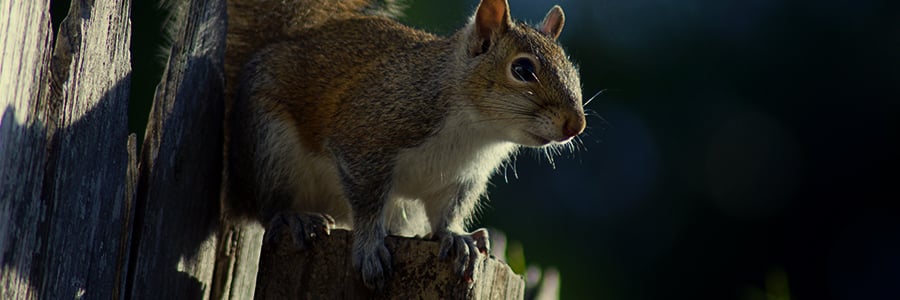
SIGNS OF SQUIRRELS
Tree squirrels have a diet that consists mainly of nuts and seeds, and rarely will they start snacking on weed plants. However, they have a habit of digging up gardens to deposit food to be consumed later. This digging can ultimately damage cannabis roots and the lower stem. Ground squirrels can be more problematic. These creatures dig tunnels under plants and will chew away at root systems.
CONTROLLING SQUIRRELS
Erecting netting around plants can be enough to deter squirrels from digging too close. If you have bird feeders in your garden, it’s helpful to purchase squirrel-proof varieties. Squirrels can also be caught alive in cage traps and removed. To prevent ground squirrels from tearing away at root systems, instal a wire or metal cage around plants that goes about 23.4 inches below the surface.
BIRDS
Birds are a double-edged sword within a cannabis garden. They are often invited into gardens as a form of biological pest control, ultimately devouring many of the insects that cause damage to plants. On the other hand, they have an appetite for cannabis seeds. While this isn’t a problem for most growers who aim to cultivate flowers as opposed to seeds, those looking to produce seeds for breeding purposes will want to find methods to keep birds away.
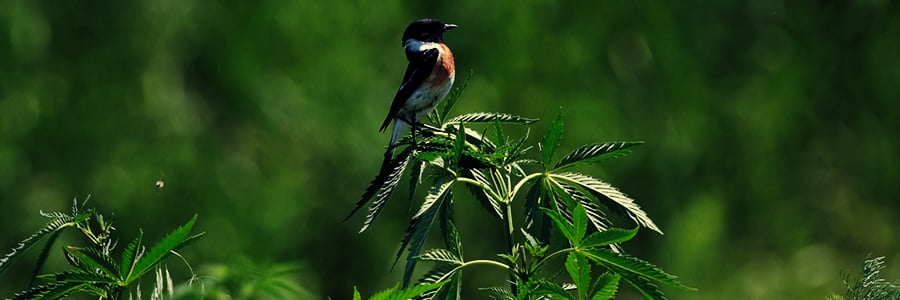
SIGNS OF BIRDS
A surefire sign that birds are around comes in the form of missing cannabis seeds on pollinated female plants. Moreover, birds are known to dig small holes under the surface of the soil to stash their food from spring to fall.
CONTROLLING BIRDS
One way to prevent birds from accessing your crop is to distract them; hang bird feeders up from nearby trees to give them a more obvious target. However, this can backfire and end up attracting many more birds to your garden. Pairing this tactic with netting should be enough to keep your seeding plants safe.




























































